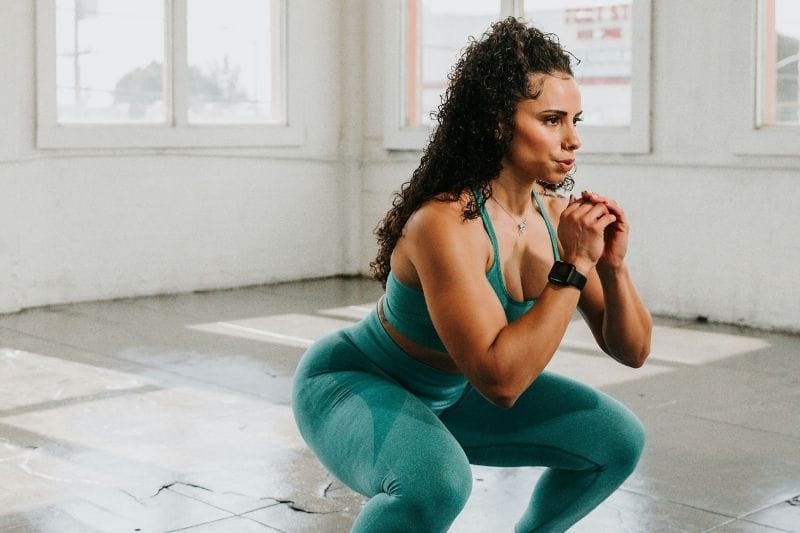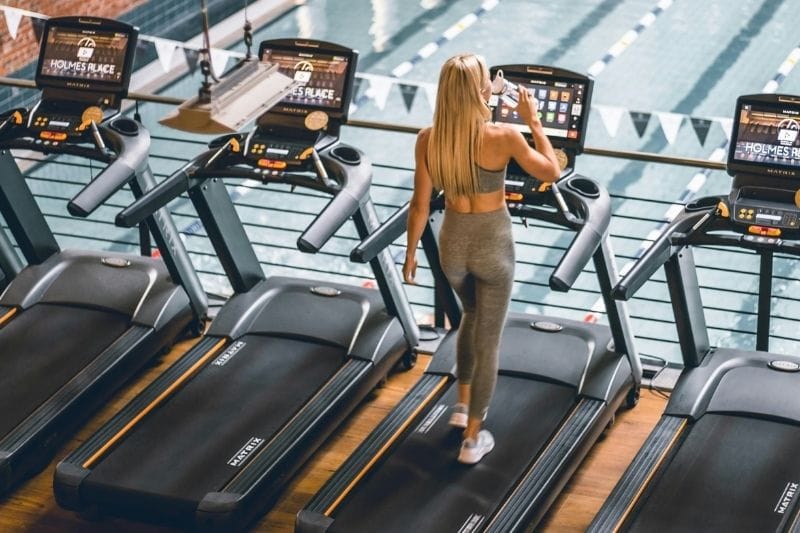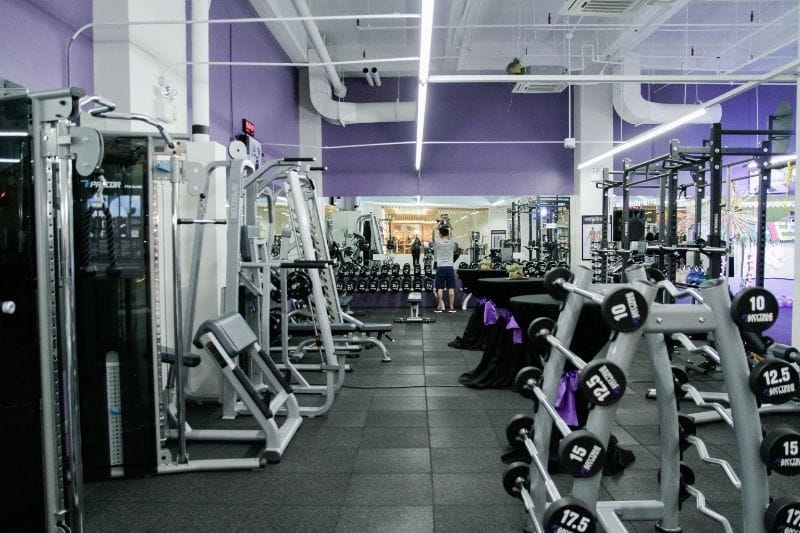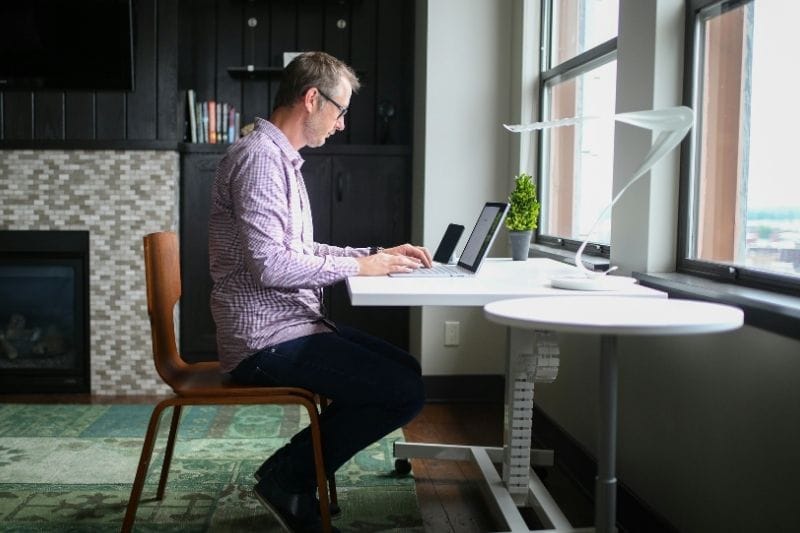Bodyweight training is useful for people who want a simple, flexible way to build strength. Some use it when they are short on time, others because they prefer training at home, or use it when travelling, and some just like the challenge of mastering their own body.
A common question is how strong you can really get without lifting weights. The answer is more than most people think. With smart progressions, good technique, and consistency, bodyweight training can build real strength and muscle.
Progression Is The Secret
Strength comes from progression. In a gym that usually means adding more weight, but with bodyweight training you can make exercises harder by slowing the movement down, adding pauses, changing leverage, or working one side at a time.
For example, press ups can be progressed by slowing the lowering phase to four or five seconds, pausing just off the floor for a moment, and then pressing back up with control. Squats can be made tougher by pausing at the bottom, elevating one foot, or progressing to single leg versions.
I’ve worked with loads of weight loss coach and online personal training clients who’ve used bodyweight training at different stages. We’ll usually start with a few simple moves like squats, incline push-ups (against a worktop if needed to make them easier at first), lunges and calf raises. As they get stronger, I’ll slow things down, add in pauses, and mix in a few more bodyweight exercises to keep it interesting.
Control And Technique Matter
You cannot cheat in bodyweight training. You have to control every rep and focus on form. That builds stability and coordination alongside strength. Movements like single leg squats or slow press ups teach you how to engage the right muscles, keep good posture, and move smoothly.
Over time this carries over into everyday activities and sports. Many runners and cyclists find that better core strength and control improves their performance even without adding extra training hours.
Core Strength Improvements
Most bodyweight exercises challenge your core in some way. Planks, side planks, hollow holds, slow leg raises, and even push ups all involve stabilising through your trunk. Building this kind of deep core strength supports your back, improves posture, and helps prevent injuries.
One of my running clients added two short bodyweight sessions each week. Her back pain disappeared, her running form improved, and she felt stronger towards the end of runs.
Add Simple Equipment When You Are Ready
Once you have a good base with bodyweight training, a small amount of equipment can open up even more options. You do not need to spend much. A pair of adjustable dumbbells and a few resistance bands can be bought quite cheaply from places like Decathlon or Facebook Marketplace.
This allows you to keep progressing without needing a full gym. You can combine bodyweight work with simple resistance exercises to build well rounded strength and variety into your training.
Top Ten Bodyweight Exercises And How To Do Them
These movements are a solid foundation for almost anyone. They target major muscle groups and can be adapted for beginners and advanced trainees alike:
- Press Ups: Start in a plank position with hands under shoulders. Lower your chest towards the floor while keeping your body straight, then push back up. Slow reps and pauses make this much tougher.
- Bodyweight Squats: Stand with feet shoulder width apart. Sit back and down as if you were sitting in a chair, keeping heels on the floor, then stand tall. Pausing at the bottom builds control and strength.
- Split Squats: Take a long step forward with one leg. Lower until your back knee nearly touches the floor, then push back up through your front heel. Great for single leg strength.
- Glute Bridges: Lie on your back with knees bent and feet flat. Lift your hips until your body forms a straight line from shoulders to knees. Squeeze your glutes at the top before lowering slowly.
- Planks: Rest on your forearms and toes, keeping your body in a straight line. Hold this position while bracing your core. You can add shoulder taps or leg lifts to make it harder.
- Side Planks: Lie on one side and lift your body so you are supported by one forearm and the side of one foot. Keep your body straight and hold. This strengthens the obliques and stabilisers.
- Step Ups: Use a sturdy step or bench. Step up with one leg, drive through the heel, then step down with control. A simple but effective leg strength builder.
- Inverted Rows: If you have a low bar or sturdy table you can lie underneath it and pull your chest up towards the bar. This is one of the best upper body pulling exercises without weights.
- Hollow Holds: Lie on your back, lift your legs and shoulders off the floor, and keep your lower back pressed down. This builds serious core strength and teaches control.
- Single Leg Squats To A Box: Stand on one leg in front of a low chair or box. Sit back slowly until you lightly touch it, then stand back up on the same leg. This builds balance and leg strength without needing weights.
Get Help Blending Bodyweight With Other Training
Bodyweight training fits well alongside running, cycling, and other sports. It is also ideal for travel, busy weeks, or people who prefer training at home. You can get surprisingly strong with short, consistent sessions if you focus on quality movement.
If you want help structuring a bodyweight programme that actually gets results, my online personal training can give you a clear plan tailored to your goals.
For runners, cyclists, and recreational athletes, my sports and running fitness, strength and nutrition coaching can show you how to integrate bodyweight work into your wider training so you can perform at your best.
If you’re looking to lose weight but don’t feel ready for the gym yet, my online weight loss coaching would be a great fit for you. I can build you a plan that works at home and then adjust it if or when you’re ready to start training in the gym, with full nutrition and accountability support included.




